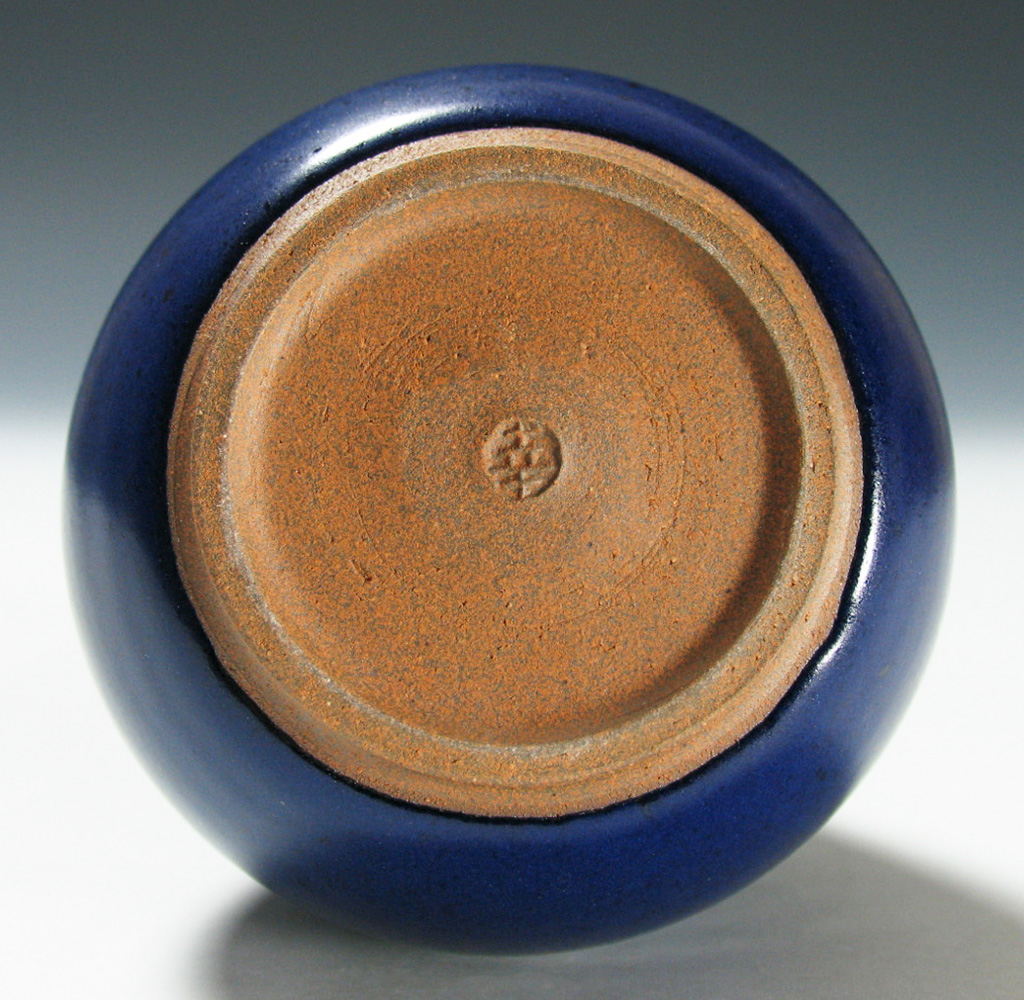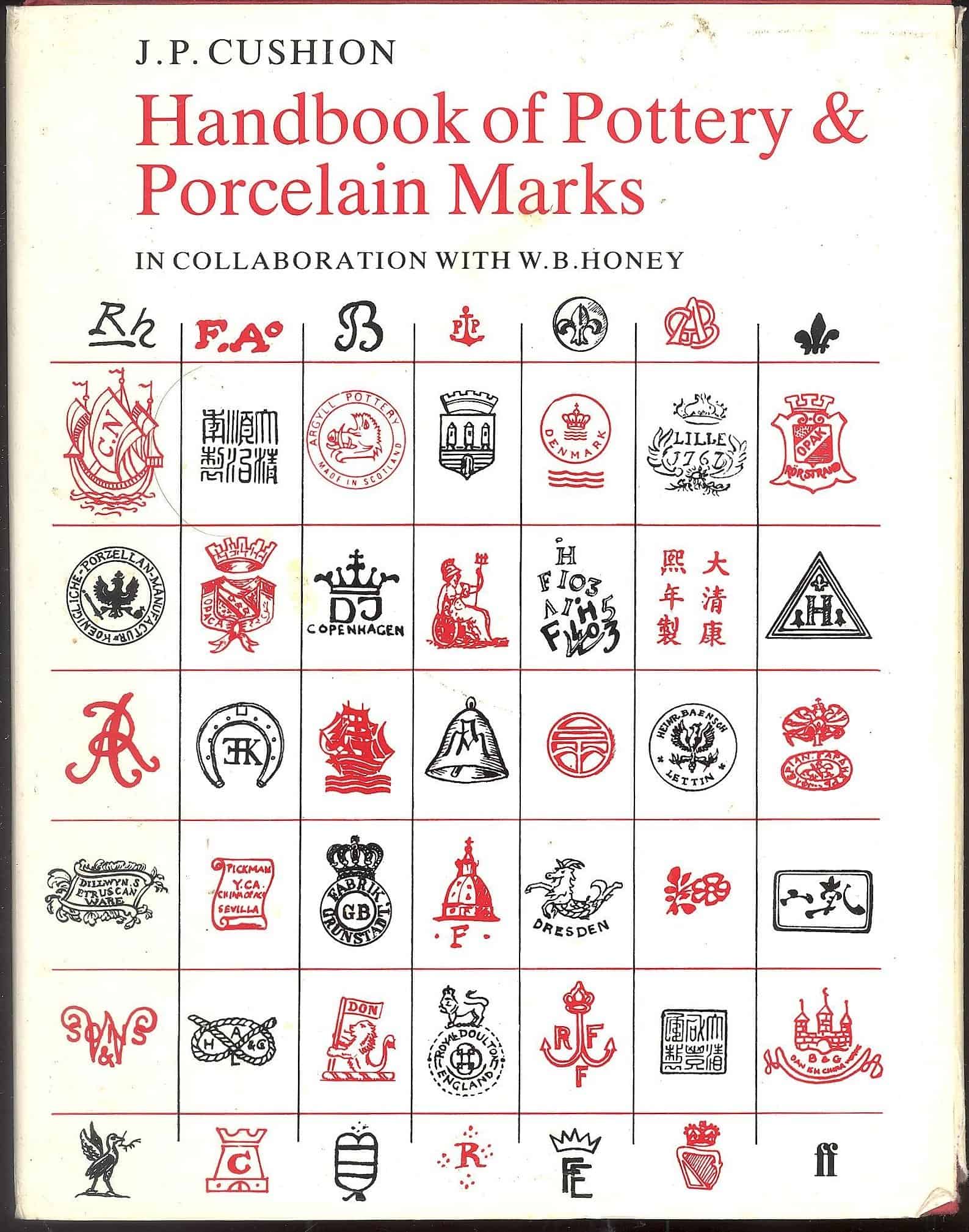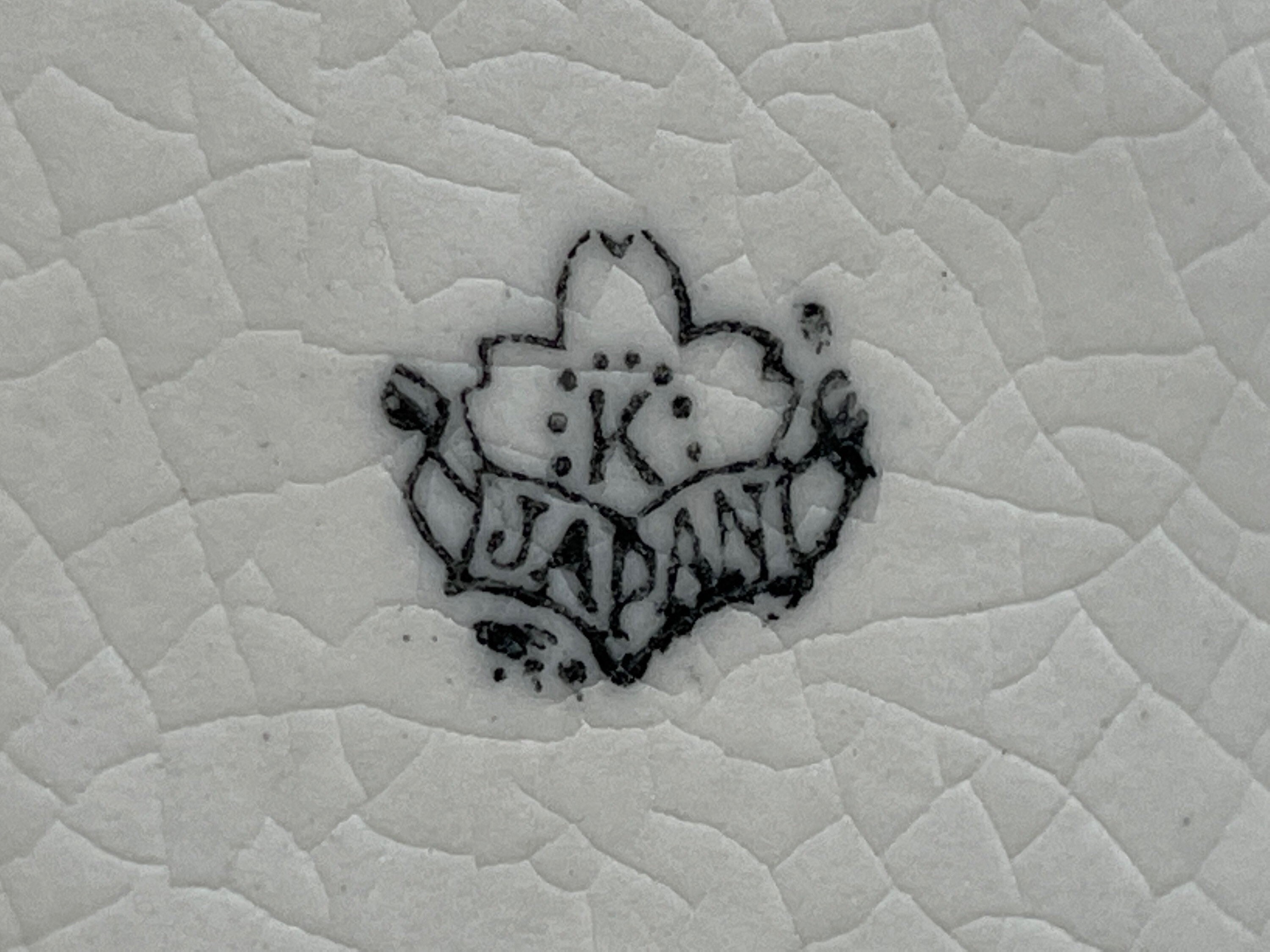
Japanese Porcelain Marks
If the piece of pottery or porcelain you have has a mark on it, you can identify it in several ways. Slavid recommends that you head to the library and look for books on the mark. "But you do need to know the country of origin," he says. "A book on English china marks won't help you find anything about a German pottery mark."

Porcelain & Pottery marks Antique porcelain, pottery books Pottery marks, Collectible
Marks on most plaques are impressed, the most common mark being an impressed scepter and the impressed letters, KPM. Pre-1925 marks. Competing factories have used marks nearly identical to Konigliche Porzellan Manufacktur marks since the 19th century. The letters alone-K, P, M-did not qualify for legal protection under German law.

Antique Pottery Makers' Marks Porcelain & Pottery marks Antique porcelain, pottery books
Wedgwood. Weatherby & Sons. Weimar. WHOLESALE. Society. Wintering. Zwiebelmuster. There are numerous vintage porcelain brands. In this page you can find some of Porcelain marks and estimated date of manufacture.

Kaasdoek Japanese pottery marks identification
KPM is an acronym for Königliche Porzellan-Manufaktur Berlin, which translates to "Royal Porcelain Factory in Berlin." The company was founded in 1763 by Frederick II of Prussia, who bought the factory from its previous owner, Johann Ernst Gotzkowsky, in the wake of its bankruptcy.
Porcelain Marks Antiques Board
The earliest porcelain mark in the history of European production is the monogrammed Meissen "AR" mark, which stands for Augustus Rex, sometimes known as Augustus the Strong. As king of Saxony in the eighteenth century, Augustus commissioned the first production of European hard-paste porcelain.

Aldermaston Pottery marks Pottery marks, Pottery, Antique pottery
Porcelain mark K with crown/li> Porcelain mark crown S Porcelain mark N under crown Porcelain mark crown 3 oak leaves Porcelain mark R with crown Porcelain mark PM with crown Porcelain mark porcelain sign N with crown Porcelain mark beehive Porcelain mark swords Porcelain mark arrow Porcelain mark crossed arrows Porcelain mark eagle

Japanese Pottery & Porcelain Marks · Identify your ceramics
British Porcelain, Pottery and Ceramic Trade Marks - K North Staffordshire Pottery Marks For more details (and other examples of marks) for Potters with the initial K click here This web site concentrates on the North Staffordshire Potteries.

Antique Porcelain Marks Identification
In 1888, Knowles, Taylor & Knowles (KT&K) built a new plant known as the Art China Works to make porcelain. Joshua Poole, who had previously worked at Belleek in Ireland, was employed to develop an American-made thin, creamy eggshell porcelain. Nine months after opening, a fire destroyed the factory. It was subsequently rebuilt.

German Pottery Marks Identification Guide Guide BizGuru
How to Identify Pottery and Porcelain Marks Identify Your Antique Pottery and Porcelain Marks With This Easy Guide. By Pamela Wiggins Updated on 05/06/20 Michelle Dwyer / Getty Images Identifying a mark on a piece of pottery or porcelain is often the first step in researching the value of these antique and collectible pieces.

Antique Pottery Marks (Types & Identification Guides)
Sarreguemines Mark France. Wien Keramos Austrian c1930. Mayer & Sherratt c1906 to 1920. Wade Pottery Mark c1957 onwards. Gerbing & Stephan G & St c1861 to 1900. Louis Majorelle Makers Mark. Staffordshire Porcelain Knot Mark. Taxile Doat Mark on Sevres Porcelain. M & Co Mark Minton c1841 to 1873.

Japanese Porcelain Marks Kutani 九谷 Japanese porcelain, Japanese pottery, Pottery marks
The mark is a coat of arms with a crown and a circle with an eagle and olive branches inside. Under the circle is "K. T. & K. CO.". Can you help me locate the pattern name and value? A: The initials "K.T. & K." stand for Knowles, Taylor & Knowles Company. The company was founded by Isaac W. Knowles in East Liverpool, Ohio, in 1853.

Herend Porcelain Marks Pottery marks, Chinese pottery, Antique pottery
Russian chemist D.I. Vinogradov, the founder of Russian porcelain, marked the first articles with the capital letter of his name, adding a year or the exact date of their manufacture. Some labels include the recipe number for the porcelain mixture. Later, from the mid-1750s, the brand takes the form of a two-headed eagle.

Japan K Vase Japanese K Mark Hand Painted Ceramic Vase Etsy UK
A pottery mark is a stamp, logo, or signature on a piece of pottery or porcelain. Pottery marks can be found on the bottom of a piece and used to identify the maker, the country of manufacture, and sometimes the date it was made. A few makers used paper labels instead of pottery marks, but these can be tricky to identify.

Horst Kerstan K mark Pottery marks, Pottery, Ceramics
Antique Pottery & Porcelain Marks Identification Guide Every collector knows that the quickest way to identify a piece of pottery or porcelain is to identify the mark, but sometimes it's unreliable because marks are often forged and changed.

Porcelain Marks, Pottery Marks and Ceramic Marks Guide Pottery marks, Chinese pottery, Pottery
uk h2-i5" cfcefhandbook of marksonpottery &porcelain by w.burton,m.a. authorof 'ahistory anddescriptionofenglishporcelain,''ahistory.

Japanese Porcelain Marks Kinkozan Zo Nippon 金庫残造 Japanese porcelain, Japanese, Porcelain
Vienna Porcelain Marks Contents [ hide] The Beehive Mark, as its commonly called, represents the traditional range of Vienna Porcelain Marks. However, the Vienna Porcelain Bindenschild (the shield not a beehive), incorporated in Vienna marks is a symbolic rendition of the center of the Coat-of-Arms of the Royal Habsburg family of Austria.